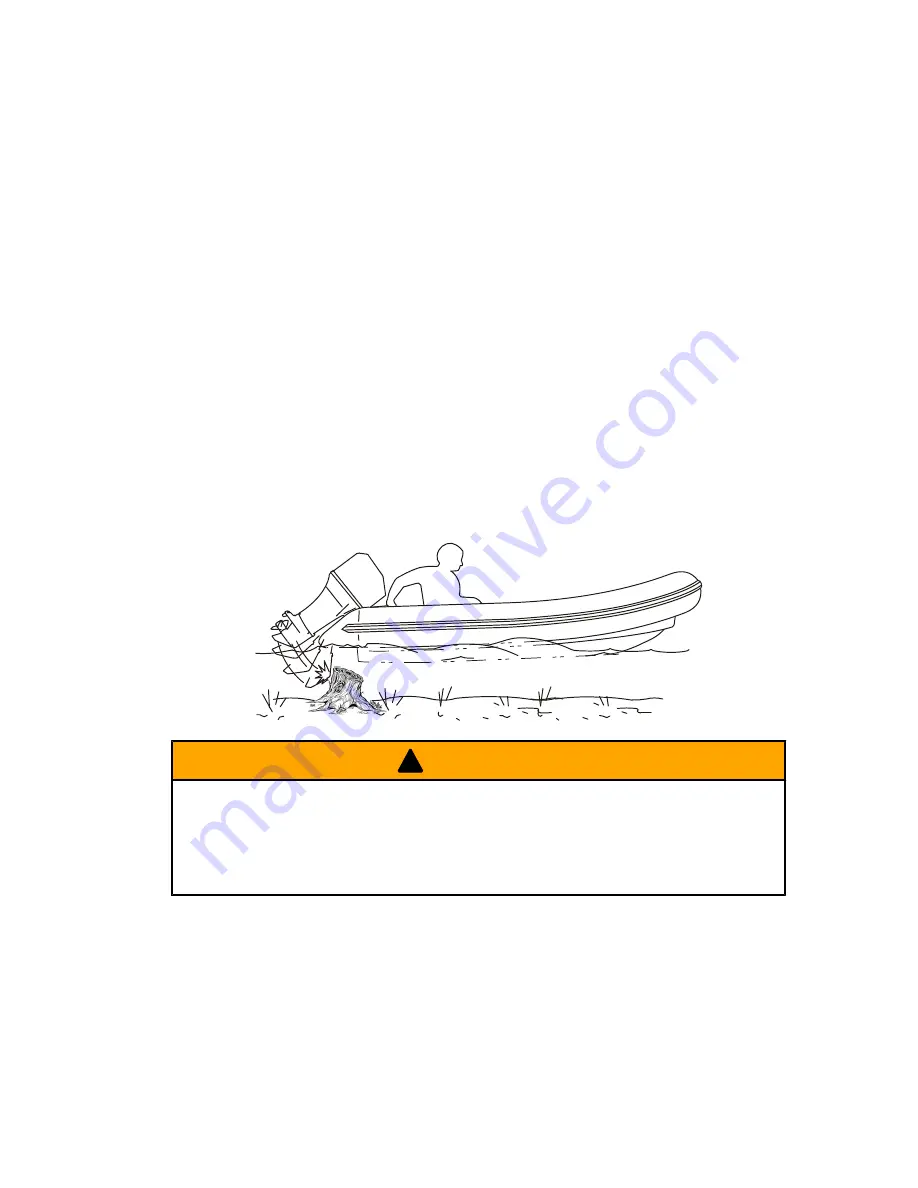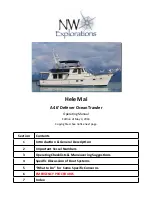
GENERAL INFORMATION
11
There is another less common hazardous result from allowing your
boat to launch off a wave or wake. If the bow of your boat pitches
down far enough while airborne, upon water contact it may
penetrate under the water surface and submarine for an instant.
This will bring the boat to a nearly instantaneous stop and can send
the occupants flying forward. The boat may also steer sharply to
one side.
Impact With Underwater Hazards
Reduce speed and proceed with caution whenever you drive a
boat in shallow water areas, or in areas where you suspect
underwater obstacles may exist which could be struck by the
outboard or the boat bottom. The most important thing you can do
to help reduce injury or impact damage from striking a floating or
underwater object is to control the boat speed. Under these
conditions, boat speed should be kept to a minimum planing speed
of 24 to 40 km/h (15 to 25 MPH).
14462
!
WARNING
To avoid serious injury or death from all or part of an outboard
coming into the boat after striking a floating or underwater
obstacle maintain a top speed no greater than minimum planing
speed.
Striking a floating or underwater object could result in an infinite
number of situations. Some of these situations could result in the
following:
• Part of the outboard or the entire outboard could break loose
and fly into the boat.
















































